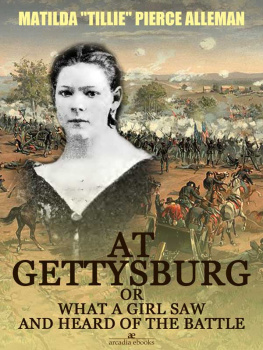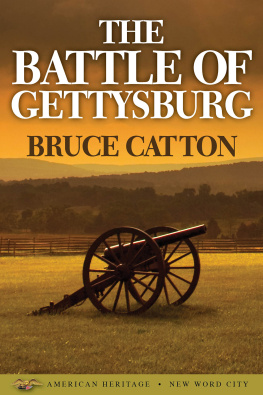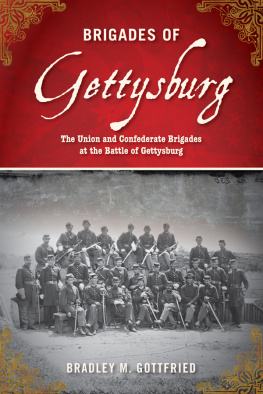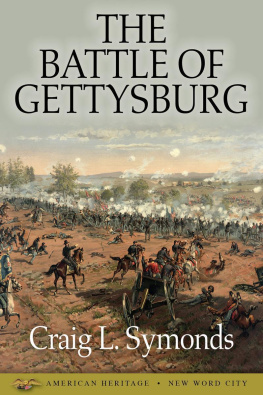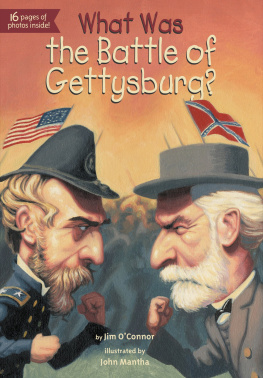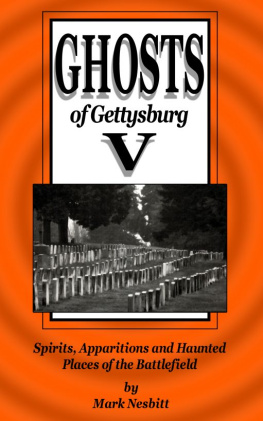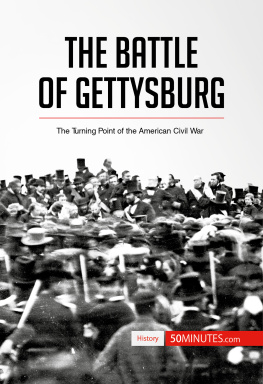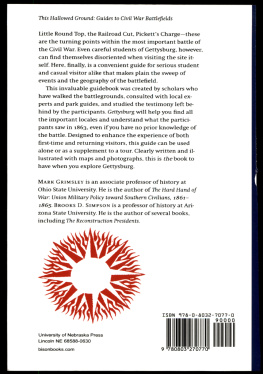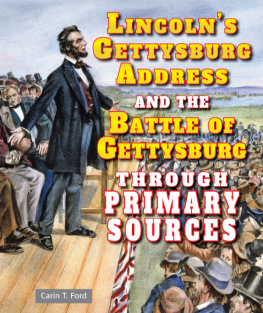This edition is published by PICKLE PARTNERS PUBLISHINGwww.picklepartnerspublishing.com
To join our mailing list for new titles or for issues with our books
Or on Facebook
Text originally published in 1989 under the same title.
Pickle Partners Publishing 2013, all rights reserved. No part of this publication may be reproduced, stored in a retrieval system or transmitted by any means, electrical, mechanical or otherwise without the written permission of the copyright holder.
Publishers Note
Although in most cases we have retained the Authors original spelling and grammar to authentically reproduce the work of the Author and the original intent of such material, some additional notes and clarifications have been added for the modern readers benefit.
We have also made every effort to include all maps and illustrations of the original edition the limitations of formatting do not allow of including larger maps, we will upload as many of these maps as possible.
ARTILLERY EMPLOYMENT AT THE BATTLE OF GETTYSBURG
By
MARK R. GILMORE, MAJ, USA
B.S., Oregon State University, 1977
TABLE OF CONTENTS
Contents
ABSTRACT
ARTILLERY EMPLOYMENT AT THE BATTLE OF GETTYSBURG: An analysis of how Union artillery forces were employed during the Battle of Gettysburg, 1-3 July 1863, by Major Mark R. Gilmore, USA,
This thesis is an historical analysis of the Union artillery at the Battle of Gettysburg. It examines the significance of the Union artillerys contribution to the Federal victory.
This study explores all aspects of the tactical employment of the Union artillery on the first and last days of the battle. A brief description of the evolution of artillery organization in the Army of the Potomac prior to the battle of Gettysburg is included. This is followed by the chronological presentation of the tactical employment of artillery during the battle. First its employment in the meeting engagement on 1 July is examined, followed by a study of its use on the final and decisive third day when Union forces fought a set- piece defensive battle.
Among the conclusions arrived at during the course of this study are these: That, the Army of the Potomacs corps artillery brigades and army artillery reserve proved to be responsive and efficient organizations in fulfilling their fire support mission, and when coupled with the skillful use of artillery and aggressive leadership by the armys Chief-of- Artillery, Brigadier General Hunt, were crucial to the successful employment of the Union artillery forces.
This study concludes that the Union artillery under the command of Brigadier General Henry Hunt had a decided and positive influence on the Federal victory by successfully employing its corps artillery brigades and army artillery reserve as part of a combined arms force.
LIST OF FIGURES
Figure Gettysburg Battlefield
Figure Artillery Positions. 1 July a.m.
Figure Artillery Positions. 1 July p.m.
Figure Pickett's Charge. 3 July p.m.
Figure The Fight at the Angle. 3 July p.m.
CHAPTER 1 INTRODUCTION
Referred to as the King of Battle, the Field Artillery has evolved into a powerful member of todays combined arms team. The history of this evolution is a long and colorful one. Under the tutelage of Napoleon artillery was raised to a prominence equal to the other military arms found on the battlefield. A former artilleryman, Napoleon recognized the potential that massed firepower offered the field commander if employed properly. As his armies demonstrated time and again, massing the firepower of his artillery at the critical time and place provided the necessary tactical advantage for his maneuver forces to breach the enemy lines and secure the victory. As the American Civil War approached, changes were occurring in the world that would have a pronounced affect on the role of artillery. Yet when the war became a reality it was evident immediately that artillerymen were not ready to deal with these changes, and would have to adapt if their arm was to survive and continue to be a contributing member of the combined arms team.
This study examines the artillerys adaptation to these changes by analyzing the performance of the Army of the Potomacs artillery during the Battle of Gettysburg. This chapter will introduce the reader to Civil War artillery in sufficient detail to provide an understanding of its material and organizational capabilities. Chapters Two and Three examine how the Union artillery was employed at Gettysburg. These chapters include a description of the artillery organization for combat, and a summary of the combat action during the first and third days of the battle, focusing on the critical combat actions during which artillery played a major role. Chapter Four concludes the study by providing a final analysis of the contribution of the Union artillery to the outcome at Gettysburg.
Napoleon maximized the potential of artillery as an offensive weapon. His artillery could range the enemy infantry easily without placing itself at risk. While the effective range of the artillery canister projectile was 300 to 400 yards, the smoothbore musket used by opposing infantry was effective to a range of no more than 150 yards. This situation had changed by the opening of the Civil War. The change radically altered how artillery was employed and the missions it performed.
The American Civil War was the first American war in which the opposing infantries were armed almost entirely with rifled small arms.
Artillery in the Civil War was of two types, foot artillery and field artillery. Foot artillery referred to those weapons and personnel used to conduct sieges, protect garrison facilities and coastal fortifications. Weapons used by the foot artillery were either large fixed cannon, or large semi-mobile cannon used in siege operations. Generally, even the cannon in the foot artillery which could be moved were so large and heavy that it was not possible for them to maneuver on the open battlefield. This was the responsibility of the field artillery, or light artillery as it was sometimes called. It was the field artillerys responsibility to maneuver on the battlefield and provide support to the maneuver forces.
Field artillery was further divided into the horse artillery and mounted artillery. Horse artillery typically was employed in support of cavalry operations where it was required that the artillery be as mobile as the unit it supported. To do this the gun crews rode on horseback alongside their guns. Men in the mounted artillery either walked alongside their guns, or rode atop the ammunition chests if the situation required. During the battle at Gettysburg only field artillery units were decisively engaged, although one battery of 20-pounder Parrott rifles, a relatively heavy weapon, accompanied the army to Gettysburg.
Rifled barrels were introduced for artillery weapons alongside the rifled musket for infantry. This afforded the artillery many of the same benefits enjoyed by the rifleman. Increased range and accuracy were two of these. Rifling enabled the artillery cannon to fire projectiles that were oblong in shape. This meant larger projectiles could be fired out of the same size bore found on a smoothbore cannon firing spherical ammunition. The oblong projectile was more aerodynamically shaped, offering less wind resistance.
A wide variety of artillery weapons were used during the Civil War, many of which were developed in response to wartime needs. Both smoothbore and rifled artillery pieces saw action throughout the war, to include the battle at Gettysburg. Prior to the war the 6-pounder smoothbore gun was the most common artillery weapon in use by the field artillery. It had seen considerable action in the Mexican War.


![Mark R. Gilmore Artillery Employment At The Battle Of Gettysburg [Illustrated Edition]](/uploads/posts/book/291131/thumbs/mark-r-gilmore-artillery-employment-at-the.jpg)

